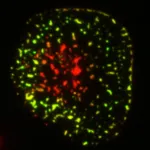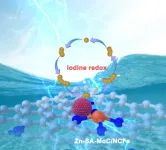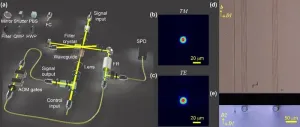(Press-News.org) Urban sprawl is not just unsightly. It could also be impeding intergenerational mobility for low-income residents and reinforcing racial inequality, according to a series of recent studies led by a University of Utah geographer.
One analysis of tract-level Census data co-authored with a former economics graduate student in the U’s College of Social & Behavioral Science found that people who grew up in high-sprawl neighborhoods have less earning potential than those who grew in denser neighborhoods.
“For adults, jobs are harder to access in more sprawling neighborhoods,” said Kelsey Carlston, now an assistant professor of economics at Gonzaga University. “If we can understand how kids' interactions with their neighborhoods are related to their economic opportunity, we can come up with some targeted policies for how to help poor kids get out of poverty and improve their situation.”
Published in Economic Development Quarterly, this study and two related ones were led by Yehua Dennis Wei, a professor in the School of Environment, Society & Sustainability. The other two were co-authored with graduate student Ning Xiong.
Wei’s three new studies build on prior work led by Utah city and metropolitan planning professor Reid Ewing, whose research scrutinizes the adverse impacts of sprawl and identifies features of urban resilience.
Ewing and colleagues, including Wei, demonstrated how sprawl at the city level could lock families into cycles of poverty across generations.
The new research gets more granular, extending into the neighborhood level by analyzing demographic information on the 71,443 tracts covered by the U.S. Census. Such tracts have 8,000 or fewer residents, and census tract data enables social scientists to survey local differences in poverty rates, income levels, ethnic characteristics, education levels and other characteristics for sub-county geographic areas.
The U studies characterize sprawl as urban environments that have low accessibility, high levels of car travel and sharply separated residential, commercial and business areas. In other words, places with poor pedestrian street access and long distances between places of work, schools, recreation, shopping and home.
“One finding is that typical livable-city indicators, like walkability, mixed-use development and job-housing balance, improve intergenerational mobility,” Wei said.
However, this might not always be the case, depending on the socioeconomic factors at play, he cautioned.
“We find that those kinds of dense mixed-use walkable neighborhoods sometimes have lower intergenerational mobility because of high concentrations of low-income families and single-parent families, and sometimes also minority populations,” Wei said. “The general finding is true, but it also depends on who is living there and the social relations in those neighborhoods.”
At the city level, sprawl has been linked to lower social cohesion and increased racial and income segregation, in addition to having negative effects on public health and the environment.
At the neighborhood level, explored in the new studies, sprawl is associated with reduced social interaction and social capital.
Wei and his co-authors relied on observational data compiled in a dataset called Opportunity Atlas, which enabled them to match IRS tax records of adults born between 1978 and 1983 to their parents’ tax records.
“The Opportunity Atlas has average outcomes at the tract level and city level for kids from different economic backgrounds,” Carlston said. “We can see how kids do compare to their parents and the relative income distribution and see if kids had the opportunity to improve their position. Then we control for variables like income, school quality, demographics and social capital.”
The dataset gives several measures of intergenerational mobility at the tract, county and commuting-zone levels. Its measures include the likelihood of going to prison, teenage birth rate and income rank.
The scholars compared intergenerational mobility in sprawling and non-sprawling neighborhoods and cities.
“If someone grew up at a tract in a 10th percentile sprawl, so very low sprawl, rather than a 90th percentile sprawl, which is very high sprawl, their expected annual income was $2,864 higher, which was almost 10% or a few percentage points in the income ranking,” Carlston said. “However, the same didn't hold for kids from higher-income families. In high-income families, kids in sprawling neighborhoods did slightly better.”
Even within dense cities, they found that sprawling neighborhoods had a strong correlation with low mobility for low-income families.
Carlston cautioned the new research does not establish a causal link between sprawl and poor social mobility.
“However, the relationship likely implicates a number of problems associated with sprawl,” she said. “For instance, sprawling areas are often broken into smaller municipalities, which means that the number of resources like community centers and parks that you have is more dependent on the income of the immediate residents.”
In other words, higher-income residents are incentivized to live where the development pattern is not best for society, but for them personally.
“That means that local city planners and officials need to consider the broader social implications and choose zoning patterns and regulations that are best for all residents, particularly trying to reduce sprawl and increase infill development may have a long-lasting positive impact on children's economic possibilities,” Carlston said. “We probably can't turn Atlanta into New York City, but we could shape neighborhoods to be built for everyone. Additionally, we could try to reduce the negative effects of sprawl by increasing connectivity with better transit and finding mechanisms to spread funding throughout metropolitan areas.”
Dennis Wei’s study co-authored with Kelsey Carlson, titled “Urban Sprawl and Intergenerational Mobility: City- and Neighborhood-Level Effects of Sprawl,” appears in the November edition of Economic Development Quarterly.
His study titled “Neighborhood environment, socioeconomic conditions, and intergenerational mobility” appears in the journal Cities. And “Urban sprawl and racial inequality in intergenerational mobility” appears in the Journal of Economic Geography. Ning Xiong, a co-author on the latter two studies, is a doctoral candidate in geography. Sergio Rey of San Diego State University is also a co-author.
END
U.S. suffers from low social mobility. Is sprawl partly to blame?
Using Census data, researchers untangle interplay between urban development patterns and socioeconomic outcomes.
2025-01-03
ELSE PRESS RELEASES FROM THIS DATE:
Research spotlight: Improving predictions about brain cancer outcomes with the right imaging criteria
2025-01-03
Raymond Y. Huang, MD, Ph.D., of the Department of Radiology at Brigham and Women’s Hospital, is the corresponding author of a paper published in the Journal of Clinical Oncology, “Comparative Analysis of Intracranial Response Assessment Criteria in Patients With Melanoma Brain Metastases Treated With Combination Nivolumab + Ipilimumab in CheckMate 204.”
How would you summarize your study for a lay audience?
Our study examines how different imaging criteria can be used to assess brain tumor responses ...
New UVA professor’s research may boost next-generation space rockets
2025-01-03
Go faster, farther, more efficiently.
That’s the goal driving spacecraft propulsion engineers like Chen Cui, a new assistant professor at the University of Virginia School of Engineering and Applied Science. Cui is exploring ways to improve electric propulsion thrusters — a key technology for future space missions.
“In order to ensure the technology remains viable for long-term missions, we need to optimize EP integration with spacecraft systems,” Cui said.
Working with his former adviser, University of Southern California professor Joseph Wang, ...
Multilingualism improves crucial cognitive functions in autistic children
2025-01-03
A new study from UCLA Health adds to the growing body of evidence on the cognitive benefits of speaking multiple languages, finding that multilingualism not only enhances general cognitive abilities but also may help reduce certain symptoms and bolster control of daily thoughts and actions in children with and without autism.
The study, published in the journal Autism Research, found parents of autistic and non-autistic children in multilingual households reported their children had stronger overall executive ...
The carbon in our bodies probably left the galaxy and came back on cosmic ‘conveyer belt’
2025-01-03
Link to full release:
https://www.washington.edu/news/2025/01/03/galaxy-carbon-conveyer-belt/
FROM: James Urton
University of Washington
206-543-2580
jurton@uw.edu
(Note: researcher contact information at the end)
For immediate release
Friday, Jan. 3, 2025
The carbon in our bodies probably left the galaxy and came back on cosmic ‘conveyer belt’
Life on Earth could not exist without carbon. But carbon itself could not exist without stars. Nearly all elements except hydrogen and ...
Scientists unveil surprising human vs mouse differences in a major cancer immunotherapy target
2025-01-03
Since its discovery in the 1990s, “programmed cell death protein 1,” or PD-1, has been regarded as a leading target in cancer treatments. A “checkpoint” receptor that often resides on the surface of immune system cells, the PD-1 molecule works as a type of off switch that keeps immune cells from attacking other cells.
After its discovery, which revolutionized oncology and earned a 2018 Nobel Prize, researchers developed new drugs to block PD-1 and unleash the body’s immune system to fight cancer. Yet treatments leveraging PD-1 are only effective in a small fraction of cancer patients, highlighting ...
NASA’s LEXI will provide X-ray vision of Earth’s magnetosphere
2025-01-03
A NASA X-ray imager is heading to the Moon as part of NASA's Artemis campaign, where it will capture the first global images of the magnetic field that shields Earth from solar radiation.
The Lunar Environment Heliospheric X-ray Imager, or LEXI, instrument is one of 10 payloads aboard the next lunar delivery through NASA’s CLPS (Commercial Lunar Payload Services) initiative, set to launch from the agency's Kennedy Space Center in Florida no earlier than mid-January, with Firefly Aerospace’s Blue Ghost Lander. The instrument will support ...
A successful catalyst design for advanced zinc-iodine batteries
2025-01-03
Aqueous zinc-ion batteries (ZIBs) have attracted extensive attention due to their high safety, abundant reserves, and environmental friendliness. Iodine with high abundance in seawater (55 μg L−1) is highly promising to fabricate zinc-iodine batteries due to high theoretical capacity (211 mAh g−1) and appropriate redox potential (0.54 V). However, the low electrical conductivity of iodine hinders the redox conversion for the efficient energy storage process with zinc. Additionally, the formed soluble polyiodides are prone to migirate to Zn anode, leading to capacity degration and ...
AMS Science Preview: Tall hurricanes, snow and wildfire
2025-01-03
The American Meteorological Society continuously publishes research on climate, weather, and water in its 12 journals. Many of these articles are available for early online access–they are peer-reviewed, but not yet in their final published form.
Below is a selection of articles published early online recently. Some articles are open-access; to view others, members of the media can contact kpflaumer@ametsoc.org for press login credentials.
JOURNAL ARTICLES
The Impact of Snowoff Timing and Associated Atmospheric Drivers on the Alaska Wildfire Season
Earth Interactions
Earlier ...
Study finds 25% of youth experienced homelessness in Denver in 2021, significantly higher than known counts
2025-01-03
AURORA, Colo. (Jan. 3, 2025) – A first of its kind study, published today in Pediatrics, has provided full-picture assessment of youth homelessness in Denver, Colorado. The findings reveal that nearly 25% of youth in Denver experienced homelessness or housing insecurity in 2021, with rates increasing almost every year since 2017.
Researchers across Colorado, led by Josh Barocas, MD and resident Matthew Westfall, MD of the University of Colorado Anschutz Medical Campus, combined multiple data sources for youth aged 14 to 17 in the City of Denver, to estimate the total number ...
Integrated spin-wave quantum memory
2025-01-03
The synchronization function of quantum memories can be employed to connect multiple short-distance entanglement into long-distance entanglement, so that to effectively overcome the transmission loss of photons and enable the construction of large-scale quantum networks. The rare-earth ions doped crystals is a candidate system for implementation of quantum memories with excellent performances, and integrated solid-state quantum memories have been successfully demonstrated with various micro- and nano- fabrication techniques.
All previous demonstrations of integrated quantum memories for light are limited to the storage ...
LAST 30 PRESS RELEASES:
Phonetic or morpholexical issues? New study reveals L2 French ambiguity
Seeing inside smart gels: scientists capture dynamic behavior under stress
Korea University researchers create hydrogel platform for high-throughput extracellular vesicle isolation
Pusan National University researchers identify the brain enzyme that drives nicotine addiction and smoking dependence
Pathway discovered to make the most common breast cancer tumor responsive to immunotherapy
Air pollution linked to more severe heart disease
Where the elements come from
From static papers to living models: turning limb development research into interactive science
Blink and you will miss it: Magnetism switching in antiferromagnets
What’s the best way to expand the US electricity grid?
Global sports industry holds untapped potential for wildlife conservation
USF-led study reveals dramatic decline in some historic sargassum populations
Fullerenes for finer detailed MRI scans
C-Compass: AI-based software maps proteins and lipids within cells
Turning team spirit into wildlife action
How influenza viruses enter our cells
New camera traps snap nearly three times more images of endangered Sumatran tigers than before
Survey: Nearly all Americans not aware midwives provide care beyond pregnancy, birth
Fearless frogs feast on deadly hornets
Fibulin-5: A potential marker for liver fibrosis detection
Development of 'OCTOID,' a soft robot that changes color and moves like an octopus
Marriage, emotional support may protect against obesity through brain-gut connection, study finds
High-speed all-optical neural networks empowered spatiotemporal mode multiplexing
High-energy-density barocaloric material could enable smaller, lighter solid-state cooling devices
Progresses on damped wave equations: Multi-wave Stability from partially degenerate flux
First discoveries from new Subaru Telescope program
Ultrafast laser shock straining in chiral chain 2D materials: Mold topology‑controlled anisotropic deformation
Socially aware AI helps autonomous vehicles weave through crowds without collisions
KAIST unveils cause of performance degradation in electric vehicle high-nickel batteries: "added with good intentions
New ECU tool can help concussion patients manage fear and improve recovery
[Press-News.org] U.S. suffers from low social mobility. Is sprawl partly to blame?Using Census data, researchers untangle interplay between urban development patterns and socioeconomic outcomes.





